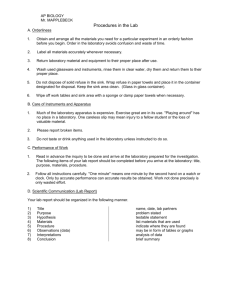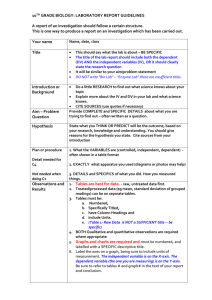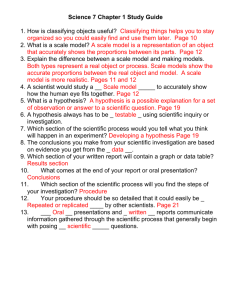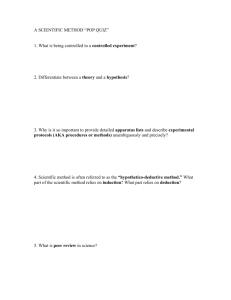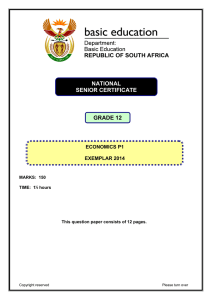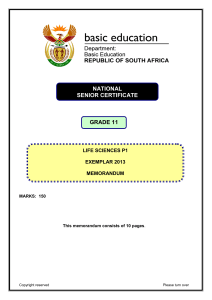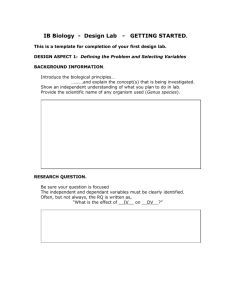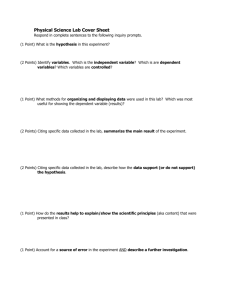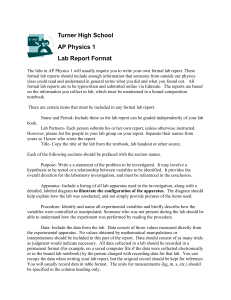NATIONAL SENIOR CERTIFICATE GRADE 11
advertisement
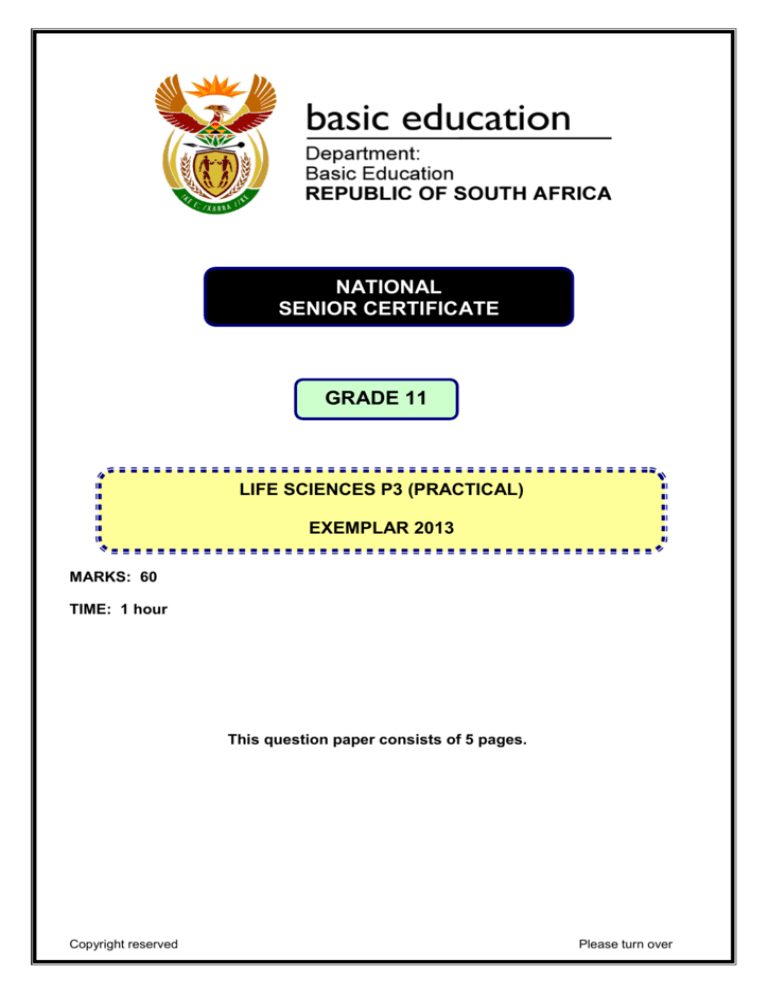
NATIONAL SENIOR CERTIFICATE GRADE 11 LIFE SCIENCES P3 (PRACTICAL) EXEMPLAR 2013 MARKS: 60 TIME: 1 hour This question paper consists of 5 pages. Copyright reserved Please turn over Life Sciences/P3 (Practical) 2 NSC – Grade 11 Exemplar DBE/2013 INSTRUCTIONS AND INFORMATION Read the following instructions carefully before doing the practical examination. 1. The practical examination is divided into FOUR stations. Each station has its own questions. 2. Each learner has to complete the relevant questions at the four different stations individually. 3. At each station, 15 minutes is allocated to complete the questions. 4. After 15 minutes your teacher will inform you to move to the next station. 5. Write ALL your answers in the ANSWER BOOK. 6. Start the answers to EACH question at the top of a NEW page. 7. Number the answers correctly according to the numbering system used in this question paper. 8. Present your answers according to the instructions of each question. 9. Do ALL drawings in pencil and label them in blue or black ink. 10. You must use a non-programmable calculator, protractor and compass where necessary. 11. Write neatly and legibly. Copyright reserved Please turn over Life Sciences/P3 (Practical) 3 NSC – Grade 11 Exemplar QUESTION 1: MANIPULATING APPARATUS DBE/2013 15 MINUTES STATION 1 NOTE TO THE TEACHER Provide learners with the following items: beaker; tripod and wire gauze; Bunsen burner/kettle with hot water; test tube/ small beaker; green leaves from a healthy plant; forceps; test tube rack; different chemicals (for example methylated spirits; iodine solution; ethanol; Benedict's solution); white tile; dropper/pipette; watch glass Use the apparatus provided to test whether there is starch in the green leaf of a healthy plant. Your teacher will assess the correct use of the apparatus as well as the correct sequence of the different steps during the test. QUESTION 2: HYPOTHESIS TESTING [15] 15 MINUTES STATION 2 Two Grade 11 learners want to investigate which enzyme is responsible for chemical digestion of starch into glucose. They are provided with two different enzymes (Enzyme A and B), starch, warm water at about 37 °C and basic glass apparatus and chemicals to test for glucose. 2.1 Formulate a hypothesis for your investigation. 2.2 Name the following variables for this investigation: (3) 2.2.1 Independent variable 2.2.2 Dependent variable 2.2.3 Fixed or controlled variable 2.3 (3) Design and plan an investigation to test the hypothesis formulated in QUESTION 2.1. Write down the method that you will follow, indicating the evidence that will allow you to accept or reject your hypothesis. Copyright reserved Please turn over (9) [15] Life Sciences/P3 (Practical) 4 NSC – Grade 11 Exemplar DBE/2013 QUESTION 3: RECORDING DATA, DRAWING A GRAPH/INTERPRETING DATA 15 MINUTES STATION 3 Study the set-up of the apparatus shown in the diagram below. The number of oxygen bubbles (O 2 ) released was counted at different times of the day as shown by the watch. Since photosynthesis releases oxygen, the amount of oxygen released was used as an indication of the rate of photosynthesis. Evening Morning O2 bubbles Pondweed Water 3.1 What was the aim of the investigation? (2) 3.2 Which TWO variables must be kept constant to ensure that the investigation is valid? (2) 3.3 Draw a table to record the results. (4) 3.4 Use the information in the table drawn to plot a bar graph. (5) 3.5 What general conclusion can be made from the results? (2) [15] Copyright reserved Please turn over Life Sciences/P3 (Practical) 5 NSC – Grade 11 Exemplar DBE/2013 QUESTION 4: KIDNEY DISSECTION AND DRAWING OF A PLANT SPECIES 15 MINUTES STATION 4 NOTE TO THE TEACHER For QUESTION 4.1, dissect a sheep's/pig's kidney to show its longitudinal section. Insert pins with flags/labels (A, B, C, D, E and F) on it as follows: A B Region C Outer covering D Region E F – – – – – – Pelvis Ureter Medulla region Renal capsule Cortex region Renal pyramid For QUESTION 4.2 the use of a fresh specimen is preferable to the use of the photographs provided. 4.1 4.2 Study the dissection of the longitudinal section through a kidney and answer the questions that follow. 4.1.1 Identify parts A and B, and regions C, E and F. (5) 4.1.2 Identify the outer layer D and name ONE function thereof. (2) 4.1.3 State the role of the fatty tissue surrounding the kidney. (1) (8) Study the photographs below of different parts of the same plant that you studied. Photo 1 Photo 2 Use information from both photographs to draw ONE fully labelled diagram showing both parts of a single plant. TOTAL: Copyright reserved (7) [15] 60
